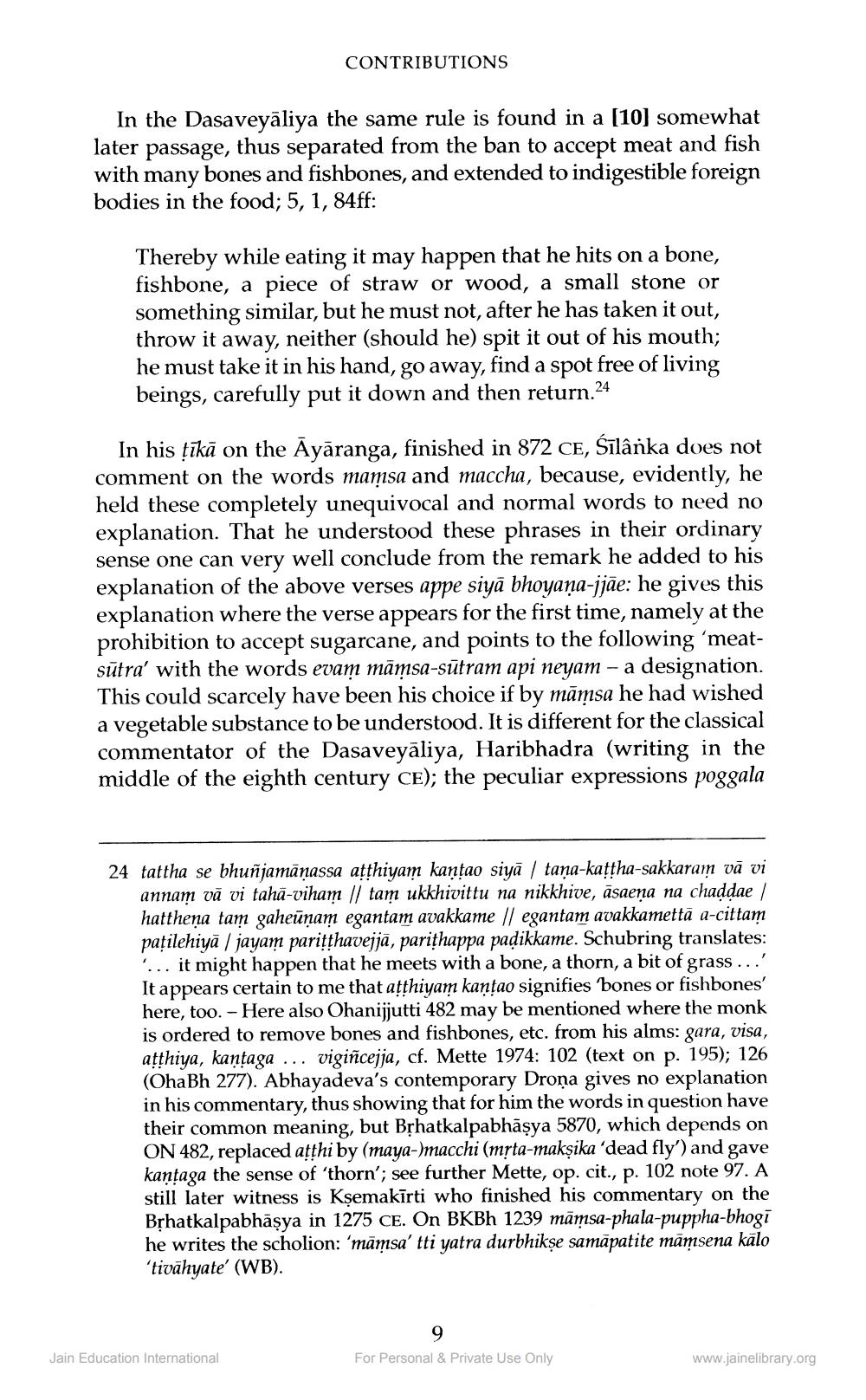________________
CONTRIBUTIONS
In the Dasaveyāliya the same rule is found in a [10] somewhat later passage, thus separated from the ban to accept meat and fish with many bones and fishbones, and extended to indigestible foreign bodies in the food; 5, 1, 84ff:
Thereby while eating it may happen that he hits on a bone, fishbone, a piece of straw or wood, a small stone or something similar, but he must not, after he has taken it out, throw it away, neither (should he) spit it out of his mouth; he must take it in his hand, go away, find a spot free of living beings, carefully put it down and then return.24
In his tīkā on the Āyāranga, finished in 872 CE, Śīlânka does not comment on the words mamsa and maccha, because, evidently, he held these completely unequivocal and normal words to need no explanation. That he understood these phrases in their ordinary sense one can very well conclude from the remark he added to his explanation of the above verses appe siyā bhoyaņa-jjāe: he gives this explanation where the verse appears for the first time, namely at the prohibition to accept sugarcane, and points to the following 'meatsūtra' with the words evam māmsa-sūtram api neyam - a designation. This could scarcely have been his choice if by māmsa he had wished a vegetable substance to be understood. It is different for the classical commentator of the Dasaveyāliya, Haribhadra (writing in the middle of the eighth century CE); the peculiar expressions poggala
24 tattha se bhuñjamāṇassa atthiyam kantao siyā / tana-kattha-sakkaram vā vi
annam vā vi tahā-viham // tam ukkhivittu na nikkhive, āsaena na chaddae/ hatthena tam gaheūņam egantam avakkame // egantam avakkamettā a-cittam pațilehiyā / jayam paritthavejjā, parithappa padikkame. Schubring translates: ... it might happen that he meets with a bone, a thorn, a bit of grass ...' It appears certain to me that atthiyam kantao signifies bones or fishbones' here, too. - Here also Ohanijjutti 482 may be mentioned where the monk is ordered to remove bones and fishbones, etc. from his alms: gara, visa, atthiya, kantaga ... vigiñcejja, cf. Mette 1974: 102 (text on p. 195); 126 (OhaBh 277). Abhayadeva's contemporary Droņa gives no explanation in his commentary, thus showing that for him the words in question have their common meaning, but Bịhatkalpabhāşya 5870, which depends on ON 482, replaced atthi by (maya-)macchi (mặta-makṣika 'dead fly') and gave kantaga the sense of 'thorn'; see further Mette, op. cit., p. 102 note 97. A still later witness is Ksemakīrti who finished his commentary on the Brhatkalpabhāşya in 1275 CE. On BKBh 1239 māmsa-phala-puppha-bhogi he writes the scholion: 'māmsa' tti yatra durbhikse samāpatite māmsena kālo 'tivāhyate' (WB).
Jain Education International
For Personal & Private Use Only
www.jainelibrary.org




